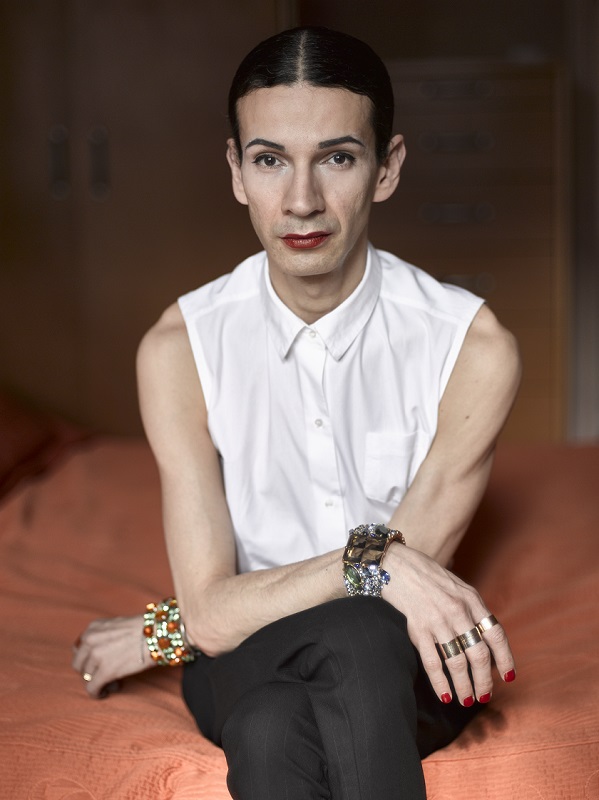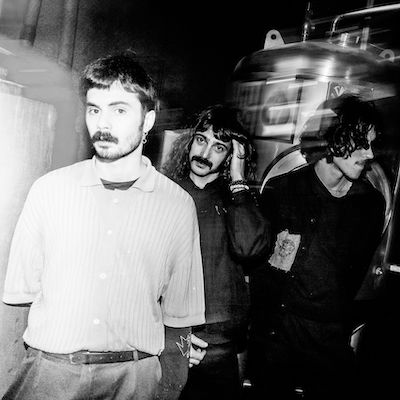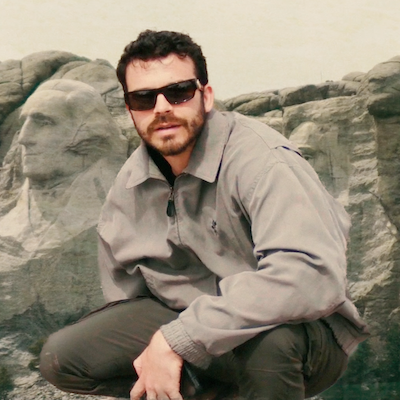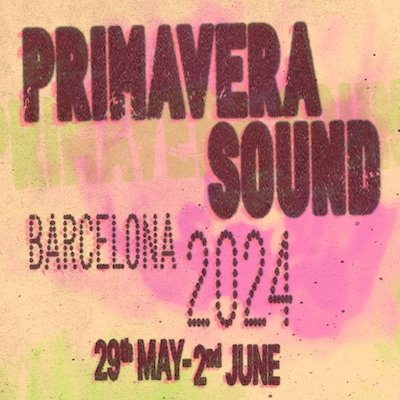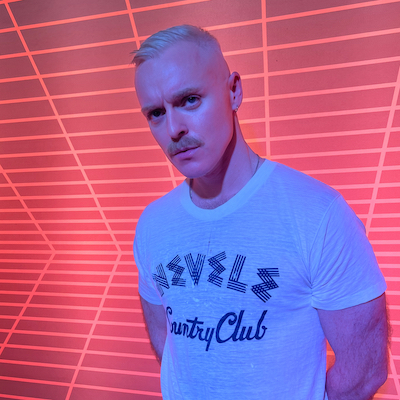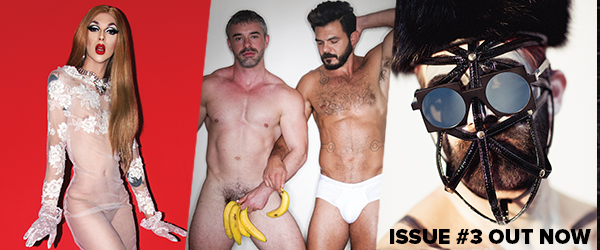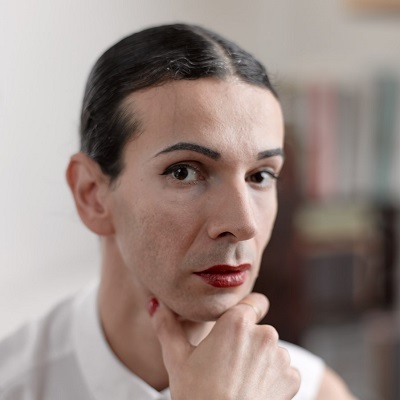
"Perhaps Sissy will be like Cher, endlessly performing The Farewell Tour"
Last year two performances from Nando Messias brought us the character of The Sissy: a feminine queer character who walks through life experiencing aggression and violence. In The Sissy’s Progress, the audience were led from the theatre to the street to parade with The Sissy, culminating in an artistic re-enactment of an actual act of violence Messias experienced on the streets of London. The second performance was Shoot The Sissy where the audience were invited to throw objects of increasing harm at Messias. We are now presented with Where 4 Roads Meet: Death And The Sissy. Fallon Gold spoke with Nando to find out how this whole experience has affected him, how performance is political survival, and asks, why is he killing The Sissy?
Loverboy has waxed lyrical about your Sissy series – it really is one of the most profound theatre experiences we’ve ever had. What brings you to this point where you will kill the Sissy?
Thanks for your kind words – I’m flattered! It’s a question that’s been at the centre of the process of developing Where 4 Roads Meet: Death and the Sissy. Right now, I don’t know why I would want to kill Sissy. I have hints, though. For instance, I often felt overwhelmed by the content of my Sissy trilogy (violence, visibility, exclusion, prejudice). I chose not to extend the tour of Shoot the Sissy because being pelted by objects became too much of a burden for me, not only physically but also emotionally and psychically. I reached a stage where I couldn’t take it anymore. Perhaps Sissy became too much for me. I realise that I might be taking the easy way out, as it were, even seem cowardly to others. Or, more to the point, that I might feel like a coward myself as a result. But as a queer subject, these issues are inescapable. My difference, in other words, is not something I can erase with any degree of success. Violence and visibility cannot be avoided: a terrifying indictment, no doubt.
But then again, maybe I was just going through a hopeless phase when I first thought of Where 4 Roads Meet: Death and the Sissy. Perhaps I needed a break. I wanted to move on and explore other subjects as an artist. Curiously, something happened to me that forced me to reconsider that position. I was verbally attacked, narrowly escaping an assault. The incident put me once again face-to-face with the question you pose. Why do I want to kill Sissy? There’s still so much work that I need to do. On a day that followed the attack, I went to Tate Britain, which is my favourite gallery, in search of inspiration, respite, beauty… I was touched by Jacob Epstein’s sculpture, Jacob and the Angel. It depicts the story from Genesis where Jacob wrestles with an unknown assailant through the night. In the morning, the assailant reveals himself to be an angel, a messenger from God. The angel blesses him for not abandoning the struggle. Epstein uses the story as an allegory for the artist’s struggle with his own materials. It inspired me immensely. It left me wondering if violence is my material as an artist.
Theatre can feel so ephemeral – you experience it but you can’t return to it like you can other arts such as painting, the written word, or film. But it lives in the memories – especially the emotion memories – of the audience. What do you want to leave audiences with from this part of your Sissy’s journey and from the Sissy series, as a whole?
Yes, ephemerality is one of the defining features of theatre. It’s what makes it exciting. The other thing about making theatre is that once the work is done, once it is put in front of an audience, it is completely out of the artist’s hands. It then becomes its own thing. What I am trying to say, I suppose, is that I have no control over how an audience is going to receive my work. As much as I would like to, I can’t predict what they are going to take away from seeing this piece. That can be quite a frightening prospect at times. I often say that if my performance changes one single person in the audience, I’m satisfied. If that happens, I feel my work is done. My wish is that one single person, at least, will leave the performance feeling like the content of the piece touched them in a very personal and special manner. If they leave feeling more informed about the harsh conditions of queer subjects, I’ll be happy. If they leave with a sense of urgency that leads them to take action to help ameliorate the living conditions of a minority group, I’d be happy. If they leave feeling inspired and elated, or if they leave feeling they have witnessed one single, fleeting moment of beauty, then I’d be happy. My hope is that the Sissy series—despite it being borne out of a very personal need to do something about violence and exclusion—touches other individuals and audience members, that it speaks to others who may or may not identify as queer, that it becomes universal somehow.
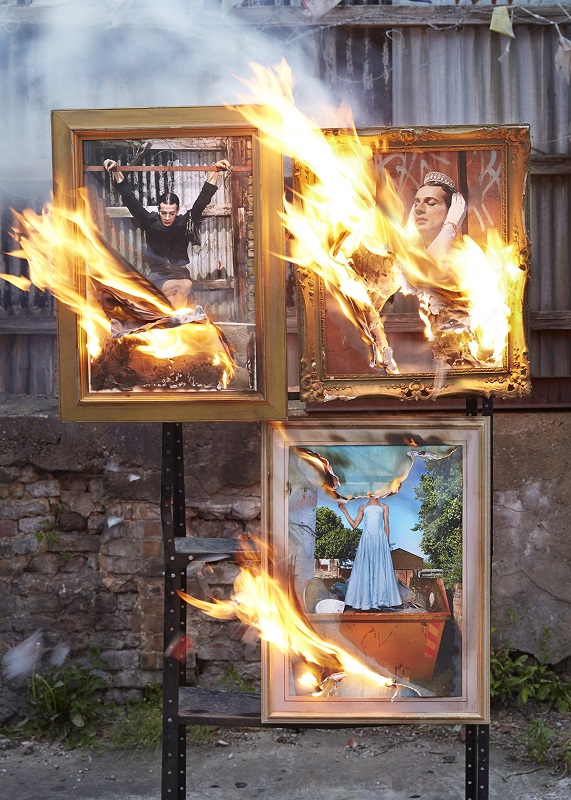
Related: Shoot the Sissy was filmed. Have you any plans to have any of the other parts of this quartet of shows filmed for posterity?
I didn’t, initially. However, as the project developed, the possibility has arisen. My initial proposal was to burn or destroy all costumes and props relating to the Sissy trilogy during the live performance of Where 4 Roads Meet: Death and the Sissy. That is no longer going to happen because there is interest in the Museum of the Sissy (a temporary exhibition of costumes and props before the live performance). This museum is now going to tour regionally and to culminate in a ritual burning of all the costumes and props. This ritual burning might be filmed so that the material will then exist in a different form for the future.
Is this really the last time we’ll see the Sissy? Are you likely to resurrect them, either in a new show or by performing this and other parts elsewhere?
Time will tell. Perhaps Sissy will be like Cher, endlessly performing the Farewell Tour.
What’s next for you, post-Sissy?
I’ll be writing a chapter in a critical theory book on performance about the experience of creating this piece and hopefully more performance work. Also I’ve been working quite intensively with The Theo Adams Company as a movement director and as a performer so more of that would be fabulous!
We live in extraordinary and extreme times. Queerness and its many facets has never been more visible and for some aspects, never been more mainstream. Yet there’s a huge backlash that increases as the conservative right gains voice and crawls out from under the hate-riddled rocks where they dwell. How do you confront this dichotomy as a performer and as a person separate from your onstage personae?
I try not to feel desperate because that would only make me feel helpless. At times, that is quite a difficult task. The situation in Brazil, where I am originally from, is quite dark at the moment for queer subjects. In my hometown of Porto Alegre, an exhibition on queer art was recently closed following protests from right wing groups. This was an unprecedented measure, something that had never happened in the history of Brazil before. It is censorship. It is fear. It is hate and it is simply not OK. As a person, I try to be defiant and resilient at the same time that I try to keep myself safe from harm. As a performer, I try not to abandon the struggle with my materials.
We’d just like to say: we genuinely love you and look forward SO MUCH to this performance and whatever you go on to next. Loverboy will always support the Sissy. We believe in letting our freak flags fly and celebrating and fighting for our many flavours. What can we, and other media outlets, do that we’re not doing already for queer voices and performers?
I can’t think of anything more than what you are already doing. Keep up the support you continuously give queer performers and non-normative subjects. I can personally say that the space you offer queer voices is essential to our survival and it is deeply appreciated.
See the special one-off performance of Where 4 Roads Meet: Death and the Sissy at Arts Admin, London, 12 October
Portraits of Nando by Bernd Ott, other image by Manuel Vason
